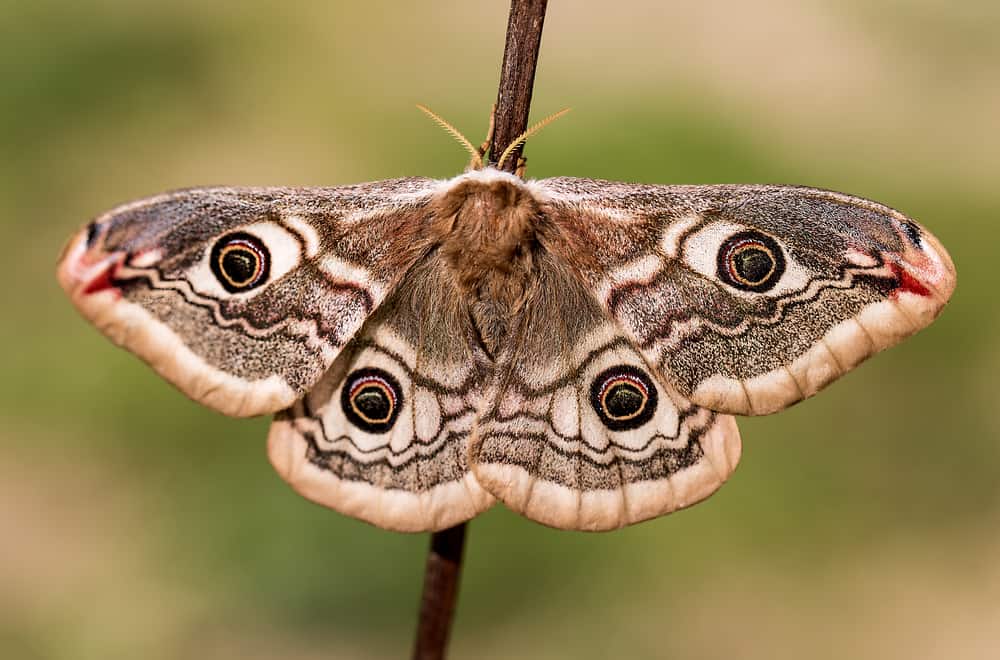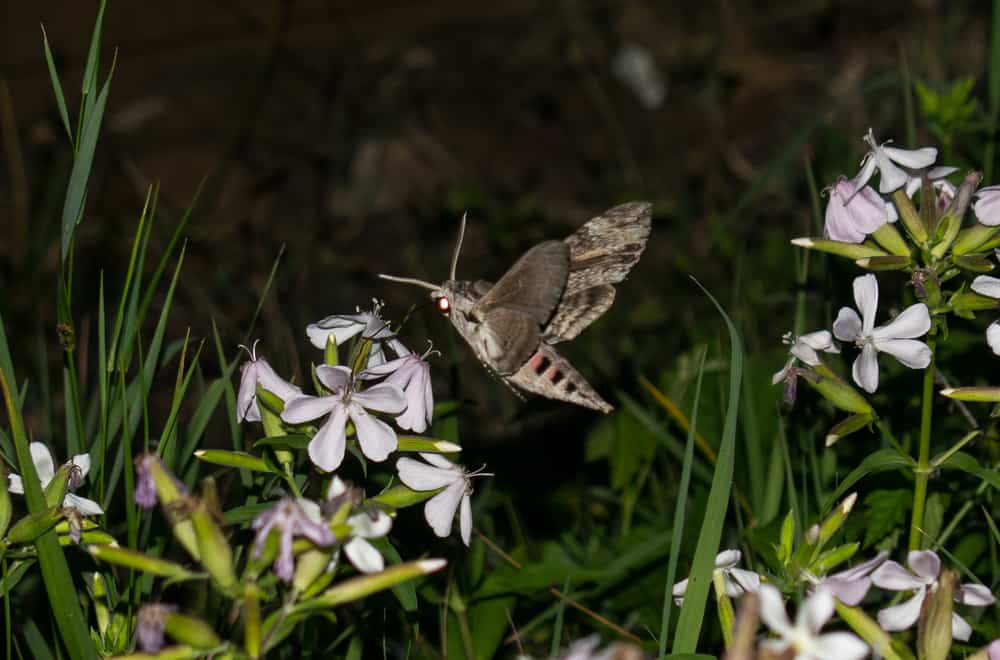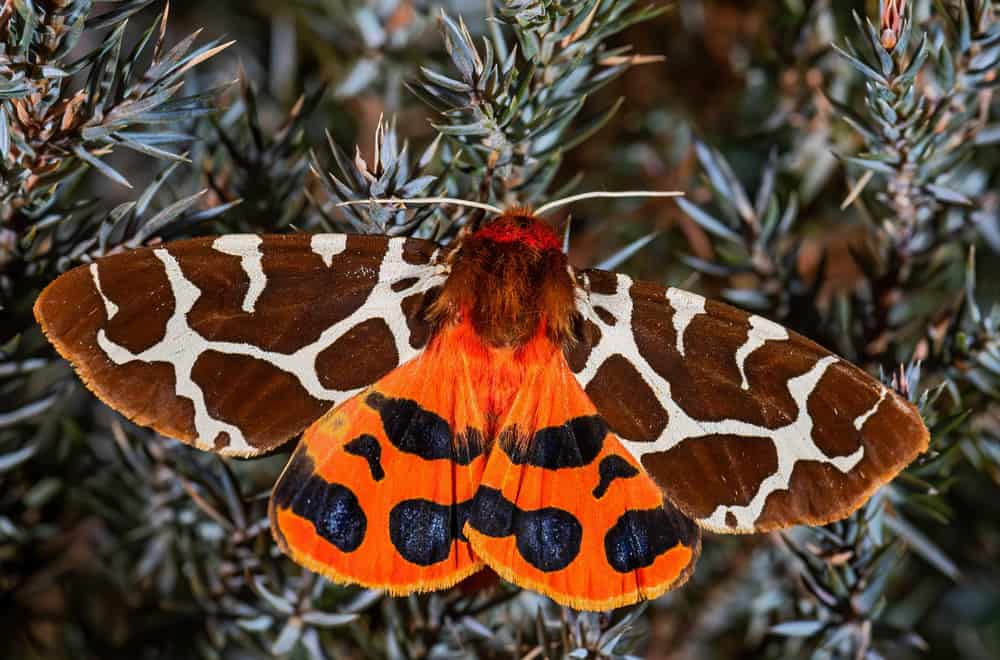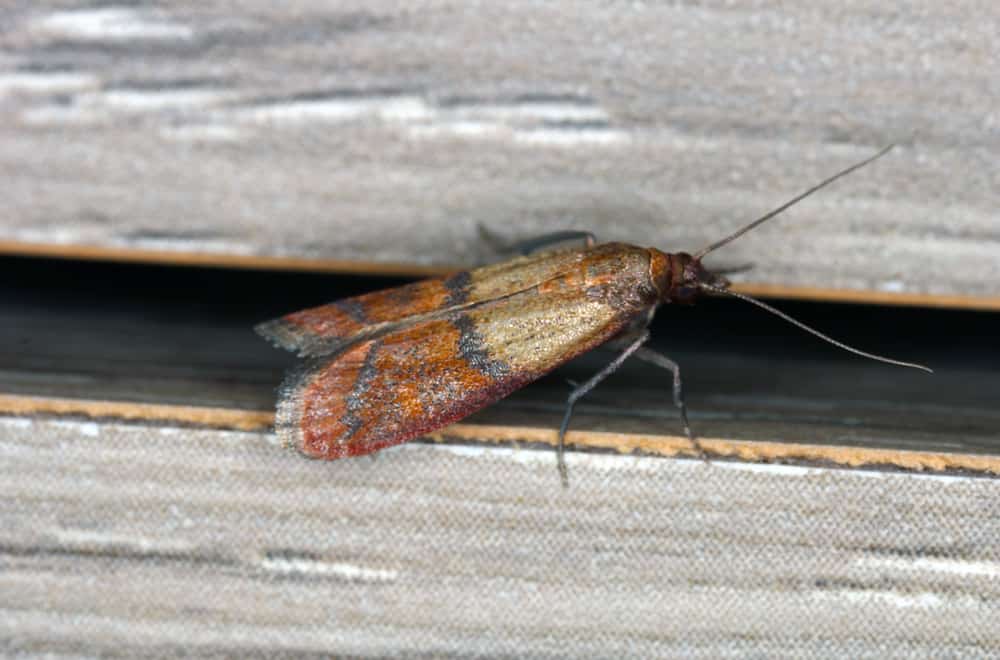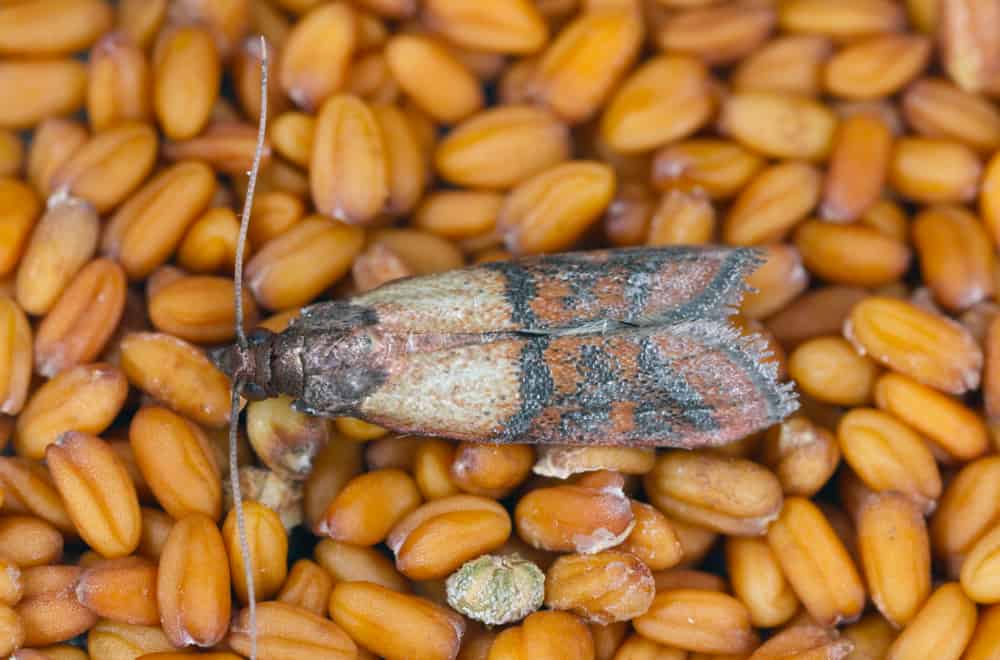I set out this weekend to make a batch of my favorite cupcakes. While I’ll admit I don’t often bake, I wasn’t expecting to see tiny wings sticking out of the flour when I opened the flour container. I checked the bag in the back, the box of cookies, and some old crumbs still way in the back corner.
Moths are clearly at home in my cupboards!
What are you supposed to do when you find winged creatures inside your tightly sealed grains or in the back of your kitchen cabinets? What are you supposed to do when you see your clothes or the edges of your carpets suddenly have small random holes? Why are moths eating these things?
With over 160,000 species of moths currently known, it can be challenging to answer the question, “What do moths eat?”
Moths eat a wide variety of items. Not all moths eat all things. Some moths have mouths, and other moths do not. What they eat depends on which species they are and what form of their foods is available. Food sources range from fresh food to non-food items, plants, or even waste products.
Things that Dissolve in Water
Moths have a powerful ability to smell specific things, which helps them find food faster. If something can be diluted in water or put off an aroma when wet, a moth will find it more accessible.
Their long tongues help them dive deeply into the center of flowers to extract nectar. Soaked remnants of animal waste may provide protein.
Certain mud types help the moth obtain minerals. Tree sap is a favorite. Human sweat, other bodily fluids, and oils sitting on or soaked into different surfaces signal to the moth that nutrients may be nearby.
Whether outside near your home or within the walls of your home, animal carcasses will also attract them. If wet, a moth may even eat tobacco or drugs.
Plants or Trees
Some moth species only eat leaves from certain wood species. Popular species may include hickory, sumac, oak, or elm. Sweetgum, pecan, and persimmon leaves are also edible for the moth.
The good news for these types of moths is that they only prefer the leaves, mostly found outside on the trees from which they originate. If you have any untreated forms of these woods in your home, then moths may potentially attempt to find a food source due to the scent of the wood.
In other parts of the world, moths choose to eat the leaves of apple trees, blueberry and raspberry bushes, chestnut tree leaves, pear, and cherry trees. If you have any miniature versions of these on your property or in a greenhouse, it might be worth inspecting these as well. If you’ve just had a good windstorm and these leaves have blown off the trees, landing near your home, it might be a good idea to sweep them away.
Chopped lumber also makes this list. If you keep a steady supply of chopped wood near your home, wood-eating moths will have both food and shelter. It’s worth inspecting the woodpile for signs of moths, like small piles of sand-like substances, tiny pinholes, and remnants of wings or skin sheds.
Although you may not want to, don’t ignore the crawl spaces, chimneys, or wall cavities of your home. Spiders and other creepy crawlies may exist, but moths love bird or rodent nests made of these types of wood that may remain in your chimney or crawl spaces.
Moths also like to eat wheat stalks. In some places in the world, moths are capable of eating entire crops. It’s always a good idea to monitor the types of bugs that are attracted to your personally grown food sources.
Different Types of Fabrics
Some moth species specifically eat things shed by other animals, including horns, feathers, skin, fur, wool, hooves, beaks, and more. Pet dander and pet hair are other favorites.
Often, this goes unnoticed. Moths that eat these types of items help these discarded things disappear and return to nature much faster than they otherwise would. The act of eating these things naturally reduces the amount of decaying stuff in the world.
I’m personally OK with moths eating this kind of stuff. I just don’t want them taking up residence and eating the things around my home!
Out of all the above items, there is one specific ingredient common to all of them: the protein keratin. Keratin exists in a fibrous format that makes up things like feather pillows, wool clothing, silk, cashmere garments, and more.
If bodily oils, fluids, or food particles exist on these things, moths are even more attracted. The moth will lay eggs on or in these things, and then the young larvae that hatch eventually eats these things as their primary food source to continue their growth cycle.
Rugs, certain types of carpets, comforters, decorative wreaths, and even the lint in your ductwork can harbor moths or their eggs. Do you have taxidermy items in your home? Because moths eat things like pet hair, your stuffed décor or taxidermy offerings (if you’re a taxidermist) may attract moths as well.
Check around the edges of these things for wings, worms, skin sheds, or a small pile of dust formed into cone-like shapes. Check under the edges of rugs if the rugs are not entirely secure in place on the floor. Eggs are often so small that a magnifying glass can help you see them.
Household Foods or Consumables
Most people don’t recognize they have a possible moth problem until, like my flour surprise, they open their food items. New (or old) boxes of rice, old containers of flour, oatmeal, or containers full of oilseeds, are all prime targets for moths seeking food.
Oilseeds are things like peanuts, sunflower, and flax seeds. Almost any kind of nut, especially walnuts or pecans, can be a moth favorite. Pet foods made from seeds, like bird food or rodent pellets, can be an attractant. Garden seeds may also not be safe. Also, just the heads of the seeds or the shell of the seeds can be enough to lure these pesky winged critters.
Moths may also home in on pasta, cream of wheat, loaves or rolls of bread, and dry dog and cat food, and packaged pet foods containing grains. Some moths can chew through paper sacks, cardboard, and plastic sealable bags with ease to get to what they want. It’s worth keeping all these types of foods sealed in hard plastic air-tight containers. Don’t ignore all of the breadcrumbs at the bottom of the toaster.
Baking supplies and sweets aren’t off-limits, either. Baking chocolate, regular chocolate, some spices, teas, herbs, and even potpourri mixes are all moth food sources. If any of these things are left spilled in the cupboard, it may attract moths.
Molasses, honey, and similar product smells may resemble the scents of the moths’ favorite nectars. Fruits like honeydew and bananas are enjoyable treats. All types of rotting fruit seem to be fair game for the winged creatures.
Popcorn seeds, cake mixes, raisins and other dried fruit, candied items, powdered milk, pet treats, and dried beans are also food sources. This true even if the corn is just used as a holiday display item on the table for long periods. Moths do not discriminate amongst colors, brands, types of beans, or specialty flavors.
Cereals are too good to pass up. It doesn’t matter if the boxes are open or closed. All kinds are suitable for a moth, especially if the cereal has any sweet coating on it.
There isn’t any reason for moths to penetrate the bottles or containers holding these items when the packaging is partially open or if remnants remain from a spill and the spill is not thoroughly cleaned. If it is stored in your cupboards or out in the open, smells good, and can keep them alive, there is a good chance the moth will go after it.
How to get rid of Moths
You suspect moths are the problem, but you aren’t quite sure how they got into your home, let alone your food items. Different moth species eat other things but rarely travel too far from their food source.
Preventing moths from potentially eating your household items starts with understanding their food sources and identifying which ones are most present in your home.
To help remove moths from your home, consider:
- Reducing the amounts of things in and around your house that attract moths.
- Sweeping and vacuuming regularly.
- Using a vacuum to get into the crevices and corners of cupboards, closets, and behind ornaments.
- Inspecting under the edges of jars and can lids, the edges of box flaps, and in the corners of the pantry.
- Keeping areas like crawl spaces, closets, or pantries free of food crumbs and spilled liquids.
- Removing moth eggs from clothes by brushing the clothes before storing them for the season.
- Removing dead insects and animal waste regularly.
- Inspecting fruit trees for evidence of silky webs encasing the leaves.
If you have any questions or other tips to eradicate moths, comment below!
